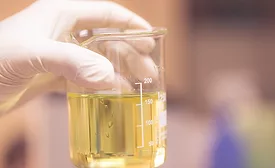Home » polyurethanes
Articles Tagged with ''polyurethanes''
CPI will present the Innovation Award at the conclusion of the 2021 Polyurethanes Technical Conference.
Read More
Sika Acquires DriTac
Sika reports that the acquisition strengthens its growth platform for interior finishing in the U.S.
April 5, 2021
Adhesives for Electronics Assembly
Adhesives provide a strong bond during electronics assembly while protecting components against potential damage.
March 29, 2021
Top 5 News that Sticks
Personnel Appointments at tesa Draw Most Reader Interest
Readers last week were most interested in personnel news from tesa.
March 22, 2021
Ask Dr. Dave
Understanding Two-Component Adhesives
Why do we have to use two-component adhesives and meter/mix equipment in our assembly and repair operations?
March 16, 2021
Automotive Team at Huntsman Polyurethanes Celebrates Supplier Award from Toyota Boshoku Europe
Huntsman received a Bronze Quality award for Superior Performance.
March 11, 2021
Dow to Establish South China Specialties Hub
The multi-year project will reportedly provide customers local access to Dow's portfolio of products and technologies.
March 10, 2021
Ask Dr. Dave
Vibration- and Shock-Resistant Structural Adhesives
Which structural adhesives can resist serious vibration and shock?
February 19, 2021
HUNTSMAN: High-Performance Adhesive Range
The ARALDITE Adhesive Core Range consists of three technologies: epoxy, acrylic, and polyurethane.
January 5, 2021
TOYOCHEM: High-Solids Polyurethane Pressure-Sensitive Adhesives
The new high-solids system reportedly contributes to reduced carbon dioxide gases during coating and drying processes for a safer, more environmentally sound work environment.
December 31, 2020
Keep the info flowing with our newsletters!
Get the latest industry updates tailored your way.
JOIN TODAY!Copyright ©2025. All Rights Reserved BNP Media.
Design, CMS, Hosting & Web Development :: ePublishing











